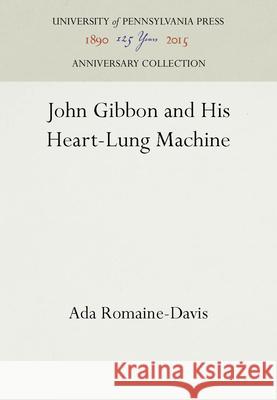John Gibbon and His Heart-Lung Machine » książka
John Gibbon and His Heart-Lung Machine
ISBN-13: 9780812230734 / Angielski / Twarda / 1992 / 278 str.
John Heysham Gibbon, Jr., M.D., was the first researcher to develop a heart-lung machine that could fully support an adult's cardiac and respiratory functions during surgical procedures to repair defects in the heart and lungs. The difficulty of such a task can be seen in the number of people who attempted it for over a century: the list is long. Gibbon succeeded on May 6, 1953, when he repaired an atrial-septal defect with the patient supported entirely by the machine for 27 minutes.Ada Romaine-Davis contends that few realize how long Gibbon worked to achieve this success. To rectify the situation, Romaine-Davis here provides a thorough study of Gibbon and his accomplishment. She shows how Gibbon overcame discouragement from his peers and mentors and obtained crucial support from IBM Board Chairman Thomas Watson. She examines each of the models produced by Gibbon and puts his achievement into historical perspective. Gibbon himself chose not to pursue cardiac surgery; he remained a thoracic surgeon. Others went on to develop the knowledge and skills that today make open-heart surgery as safe as other major surgical procedures. As Romaine-Davis amply demonstrates, these pioneers stand on the shoulders of a stubborn, persevering, single-minded genius whose determination to leave a legacy to his profession resulted in the one thing essential for sustained progress in heart surgery: John Gibbon's heart-lung machine.This meticulously researched study will make fascinating reading for physicians--especially surgeons--as well as for students and scholars of medical history and science and technology.











